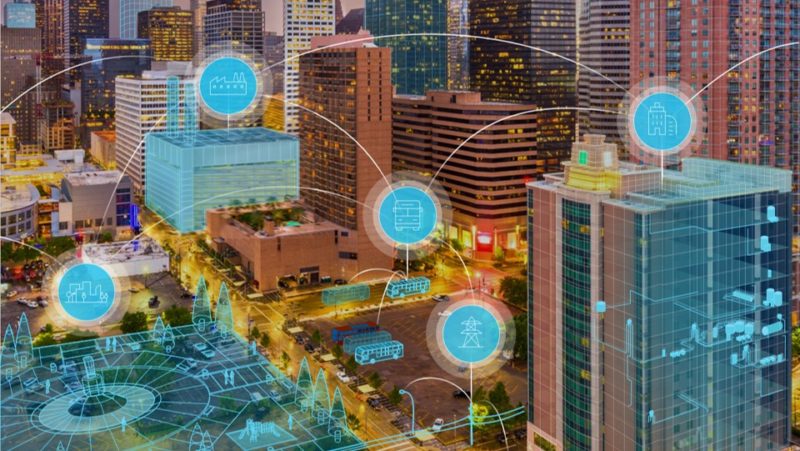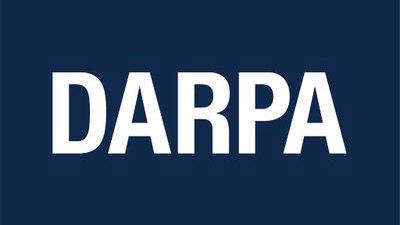Microsoft announced on Monday the public preview of Azure Digital Twins. Azure Digital Twins is a new platform for comprehensive digital models and spatially aware solutions that can be applied to any physical environment. Partners and customers can now query data in the context of a space—rather than from disparate sensors—empowering them to build repeatable, scalable experiences that correlate data from digital sources and the physical world.
Azure Digital Twins has been developed as part of the Azure IoT platform to provide scale, reliability, compliance, security and privacy benefits that Microsoft Azure is known for. It means environments of all types—offices, schools, hospitals, banks, stadiums, warehouses, factories, parking lots, streets, intersections, parks, plazas, and more—can become smarter spaces, and so can the supporting infrastructure and even entire cities.
For years now, partners and customers have been using the Azure Internet of Things (IoT) platform to create applications for a variety of industries. Along this journey, Microsoft learned that most digital transformation efforts benefit from context about the physical world. As a result, organizations are showing a growing appetite for solutions that provide a deeper understanding of the sophisticated interactions between people, places, and things.
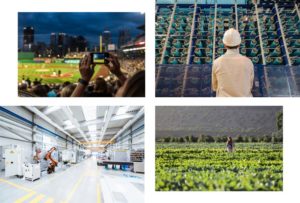
Enter the concept of the “digital twin”—a virtual representation of a physical environment that brings in data from a variety of sources. Historically, digital twins have been used for industrial equipment (machines, fleets of machines, engines, and the like), but the concept of a digital twin is also broadly applicable to modeling all the ways we live and work in our physical environment.
Modeling the complex interactions and high-value intersections between people, places, and things is unlocking new opportunities, creating new efficiencies, and improving public and private spaces.
Most IoT projects start from a things-centric approach, but Microsoft has flipped that around. The company found that customers realize huge benefits by first modeling the physical environment and then connecting (existing or new) devices to that model. Customers gain new spatial intelligence capabilities and new insights into how spaces and infrastructure are really used.
Privacy and security controls are an integral part of the Azure IoT platform. Once a digital model is in place, Azure Digital Twins uses Azure IoT Hub to connect the IoT devices and sensors that keep everything up-to-date with the physical world. Azure Digital Twins will help customers build next-generation IoT solutions that go beyond just connecting devices—predicting maintenance needs, analyzing energy requirements, optimizing the use of available space, creating more efficient processes, and more.
The platform features spatial intelligence graph which is an actual virtual representation of a physical environment that models the relationships among people, places, and devices. This digital twin generates insights that allow organizations to build solutions that can improve energy efficiency, space utilization, occupant experience, and more. This includes blob storage—the ability to attach and store maps, documents, manuals, pictures, etc. as metadata to the spaces, people, and devices represented in the graph.
The twin object models service also offers pre-defined schema and device protocols that align to a solution’s domain-specific needs to accelerate and simplify their creation. These benefits can apply to any interior or exterior space, as well as to infrastructure or even entire cities.
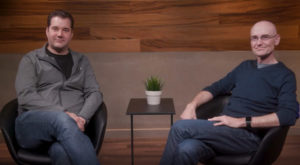
It delivers advanced compute capabilities. Users can define functions that generate notifications or events based on telemetry from devices and sensors. This capability can be applied in a variety of powerful ways. For example, in a conference room when a presentation is started in PowerPoint, the environment could automatically dim the lights and lower the blinds. After the meeting, when everyone has left, the lights are turned off and the air conditioning is lowered.
The offering also includes data isolation via multi- and nested-tenancy capabilities. Users can build solutions that scale and securely replicate across multiple tenants and sub-tenants by leveraging built-in multi- and nested-tenancy capabilities to ensure data is isolated. Security through access control and Azure Active Directory (AAD). Role-Based Access Control and Azure Active Directory serve as automated gatekeepers for people or devices, specifying what actions are allowed—and helping to ensure security, data privacy, and compliance.
Azure Digital Twins integrates with Microsoft services. Customers and partners can build out their solution by connecting Azure Digital Twins to the broader set of Azure analytics, AI, and storage services, as well as Azure Maps, Azure High-Performance Computing, Microsoft Mixed Reality, Dynamics 365, and Office 365.
Combined, these capabilities enable our partners to focus on driving results for their end customers by delivering advanced relational modeling while also addressing critical needs for privacy, security, and the ability to scale globally.
Digital Twins can be used across the life cycle of a building, leveraging data that was formerly lost or siloed between stages of design, construction, ownership, and occupancy.
Willow, a global technology company headquartered in Australia, is addressing this need by creating a new category of innovation for the built environment.
Willow Twin provides a digital replica of the physical world that is simple and intuitive. The solution uses Azure Digital Twins’s cloud, AI, and IoT capabilities to model a building, track real-time data, and connect devices. Azure Digital Twins enables Willow to store the hierarchy and building data while feeding in details from other systems—architectural designs, warranties, manuals—providing one place to view all aspects of a building. Drawing on all of this historical and live data, Willow Twin creates actionable insights that can transform the operation of buildings and infrastructure and how people experience those assets.
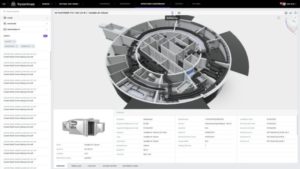
The smart buildings industry focuses on enhancing operations and energy savings. Solutions provider ICONICS was the initial building energy partner to adopt the Azure Digital Twins platform, taking advantage of the platform’s pre-defined data schemas and advanced computing capabilities. ICONICS pulls telemetry from equipment and facilities, uncovering insights that can help reduce operating costs and improve tenant satisfaction.
With Azure Digital Twins, partners also have the benefit of connecting into other Microsoft offerings and the partner ecosystem. For example, MacDonald-Miller, a Seattle-based facility solutions company, uses Azure IoT services, Dynamics 365 for Field Service, and ICONICS Smart Building Software to dispatch service techs. They arrive with the right information, tools, and parts needed to make a first-time fix if a building’s system is using too much energy.
Rigado also announced it has integrated its IoT edge infrastructure with Microsoft Azure Digital Twins to support deployment of Smart Workplace solutions. Commercial real estate operators are increasingly looking to develop Smart Workplace solutions for enhanced employee experiences and efficacy in the workplace. The joint solution already provides IoT data in technically advanced buildings like the Salesforce Tower in San Francisco.
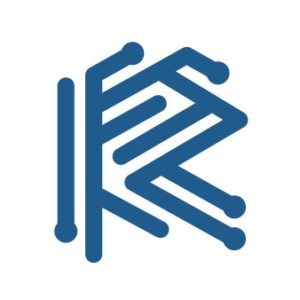
“Smart buildings hold a lot of promise. By bringing multiple siloed systems under a single IoT platform, operators will be able to increase building efficiency, provide an optimized employee environment, cut operating costs and increase the quality of life for tenants,” notes Ben Corrado, CEO at Rigado. “Yet, creating an infrastructure that supports these smart strategies can be a challenge. That’s why we’re excited to provide the IoT edge infrastructure in the Azure ecosystem that makes it quicker and easier for organizations to create IoT based services — and business value — for their customers.”
Earlier this spring, Microsoft announced an investment of $5 billion in IoT over the next four years. Its goal is to simplify the journey in IoT so any customer, no matter where they’re starting from, can create trusted, connected solutions for digital transformation.
Azure Digital Twins offers a powerful example of how Microsoft continues to deliver on this commitment. By removing layers of complexity and accelerating the creation of spatial intelligence solutions, Azure Digital Twins provides organizations with the foundation they need to create the next wave of innovation in IoT, leading to a more connected world that empowers people and organizations to achieve more.
Azure Digital Twins will be publicly available for customers to begin building solutions next month.

